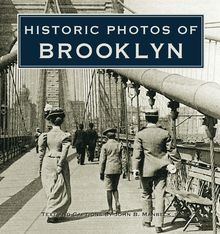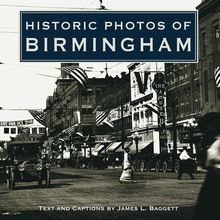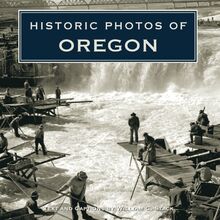Historic Photos of Lexington , livre ebook
153
pages
English
Ebooks
2006
Vous pourrez modifier la taille du texte de cet ouvrage
Obtenez un accès à la bibliothèque pour le consulter en ligne En savoir plus
Découvre YouScribe et accède à tout notre catalogue !
Découvre YouScribe et accède à tout notre catalogue !
153
pages
English
Ebooks
2006
Vous pourrez modifier la taille du texte de cet ouvrage
Obtenez un accès à la bibliothèque pour le consulter en ligne En savoir plus
Publié par
Date de parution
01 juin 2006
Nombre de lectures
0
EAN13
9781618586483
Langue
English
Poids de l'ouvrage
60 Mo
Publié par
Date de parution
01 juin 2006
Nombre de lectures
0
EAN13
9781618586483
Langue
English
Poids de l'ouvrage
60 Mo
HISTORIC PHOTOS OF
LEXINGTON
T EXT AND C APTIONS BY W. G AY R EADING
College of the Bible (built 1895) at Transylvania University (then Kentucky University), 1898.
HISTORIC PHOTOS OF
LEXINGTON
Turner Publishing Company
200 4th Avenue North Suite 950
Nashville, Tennessee 37219
(615) 255-2665
412 Broadway P. O. Box 3101
Paducah, Kentucky 42002-3101
(270) 443-0121
www.turnerpublishing.com
Copyright 2006 Turner Publishing Company
All rights reserved.
This book or any part thereof may not be reproduced or transmitted in any form or by any means, electronic or mechanical, including photocopying, recording, or by any information storage and retrieval system, without permission in writing from the publisher.
Library of Congress Control Number: 2006902321
ISBN-13: 978-1-59652-262-6
Printed in the United States of America.
07 08 09 10 11 12 13 14-0 9 8 7 6 5 4 3
C ONTENTS
A CKNOWLEDGMENTS
P REFACE
B IRTH OF A C ITY AND P OST C IVIL W AR C HANGES
G ROWTH FROM S LUMBER
L IVING W ELL IN W AR AND D EPRESSION
T OWARD THE S ECOND C ENTURY
N OTES ON THE P HOTOGRAPHS
View of Third Street, late 19 th century.
A CKNOWLEDGMENTS
This volume, Historic Photos of Lexington , is the result of the cooperation and efforts of many individuals, organizations, institutions, and corporations. It is with great thanks that we acknowledge the valuable contribution of the following for their generous support.
Equus Standardbred Station
Georgetown College
University of Kentucky Libraries
Transylvania University Special Collections Library
Lexington Opera House/Lexington Center Corporation
Keeneland
Kentucky American Water Company
Our appreciation goes to Tamara Farnsworth for her professional guidance and assistance in research and verification.
We would also like to thank the following individuals for their valuable contribution and assistance in making this work possible
Jason Flahardy, Audio Visual Archivist, University of Kentucky Libraries
Luanne Franklin, Program Director, Lexington Opera House
BJ Gooch, Special Collections Librarian and University Archivist,
Transylvania University Library
Susan Lancho, Communications Manager, Kentucky American Water
Cathy Schenck, Librarian, Keeneland Library
Glen Edward Taul, Ph.D., Director, Archives, Georgetown College
P REFACE
Lexington has thousands of historic photographs that reside in private and public archives. These photographs give us an important link to the city s past. During a time when Lexington is looking ahead and evaluating its future course, many people are wondering how to treat the city s past. These decisions affect every aspect of the city - architecture, public spaces, commerce, and infrastructure - and these, in turn, affect the way that people live their lives. This book seeks to provide easy access to a valuable, objective look into Lexington s history.
The power of photographs is that they are less subjective in their treatment of history. While the photographer can make decisions regarding what subject matter to capture and some limited variation in its presentation, photographs do not provide the breadth of interpretation that text does. For this reason, they provide an original, untainted perspective that allows the viewer to interpret and observe.
The project represents countless hours of review and research. The researchers and author have reviewed thousands of photographs in numerous archives. We greatly appreciate the generous assistance of the archivists listed in the acknowledgements of this work, without whom, this project could not have been completed.
The goal in publishing this work is to provide broader access to a set of extraordinary photographs. We hope to inspire, provide insight and perspective using the past as a lesson for the future. Equally as important, this book seeks to preserve the past with respect and reverence.
The photographs we have selected for this book represent the technology of that era. With the exception of touching up imperfections caused by time, no other changes have been made. The focus and clarity of many images is limited to the technology and ability of the photographer at the time they were taken.
The work is divided into eras. Beginning with some of the earliest known photographs of Lexington, the first section records events from the Civil War era through the end of the nineteenth century. The second section spans the first two decades of the twentieth century. The third section moves through the depression. The final section takes us through World War II up to the 1970 s.
In each of these sections we have made an effort to capture various aspects of life through our selection of photographs. People, commerce, transportation, infrastructure, religious institutions, and educational institutions are included to provide a broad perspective.
We encourage readers to reflect as they walk down Main Street, through Gratz Park, or visit Transylvania. Streetcar tracks once ran down Broadway, houses and shopping centers now sit on land where horses once grazed, and the site of the city s first marketplace is once again bustling with downtown businesses. It is the publisher s hope that in utilizing this work, long time residents will learn something new, and new residents will gain insight on where Lexington has been, so that each can contribute to its future.
Todd Bottorff, Publisher
Street car center at Lexington s fourth courthouse (built 1883-84), burned 1897.
B IRTH OF A C ITY AND P OST C IVIL W AR C HANGES
1775-1899
The earth rich region known today as Lexington, Kentucky was named by a group of land seekers camped by a spring in the area upon hearing of the first bloodshed of the American Revolution. Lexington became the seat of Fayette County and the town was officially created in 1782. It is better known as the heart of the Bluegrass country (named for the color effect of the seed plume of a grass native to this savannah plateau seen in certain lighting conditions).
It would be hard to overestimate the role Transylvania University played in the cultural and social development of Lexington. This oldest institution of higher learning west of the Alleghenies can be seen as a main reason Lexington was called The Athens of the West .
Henry Clay, one of the most popular political figures in the country of his day and an icon of the flourishing West , stands as the best known of a number of gentlemen of means and endeavor who built the institutions and fabric of the city. Men such as Clay championed compromises that postponed the Civil War for better or worse. Lexington was both for the Union and for slavery.
It is never to be forgotten that the slave trade flourished in this community although the institution of slavery was not of great economic viability in the agricultural structure of the region. Neutrality was the most commonly sought position. Lexington seemed to prosper during the Civil War. Local building continued while the South burned. Slavery was not abolished here until after the war. A community that had remained with the Union began to have increasingly Southern sympathies. It is often said that Kentucky, and especially Lexington, waited until after the Civil War to secede. But this is a simplified truth.
The prosperity the city enjoyed during the Civil War brought with it challenges. Lexington did not have an adequate waterworks system until 1885. The city had avoided this necessary improvement for years. A drought in 1883 forced action and Lexington could proceed with other enterprises. Increased rail transport connected the city with the natural raw material riches of the state. Public transportation within the city grew. By the end of the century, public roads maintained at public expense had replaced an outdated system of toll turnpikes. Electric lights flickered here in 1882. The telephone first appeared about two years earlier.
The funeral procession of Senator Henry Clay on Main Street, Lexington, 10 July 1852.
Old soldiers reunion (some in Union uniforms), late 19 th century.
Lexington s third courthouse (built in 1806), late 19 th century.
Upper Market House (built 1844), Vine Street, demolished 1879.
Stage coach stop on Short Street, ca. 1885.
Lexington Fire Department on Short Street, ca. 1875.
Sheriff s office on Upper Street, 1815 (burned 1897).
Breaking hemp in the field, late 19 th century.
Madam Belle Brezing in her private parlor in her bordello at 59 Megowan Street, 1890.
Kentucky State Guard encamped in Woodland Park, 1899.














